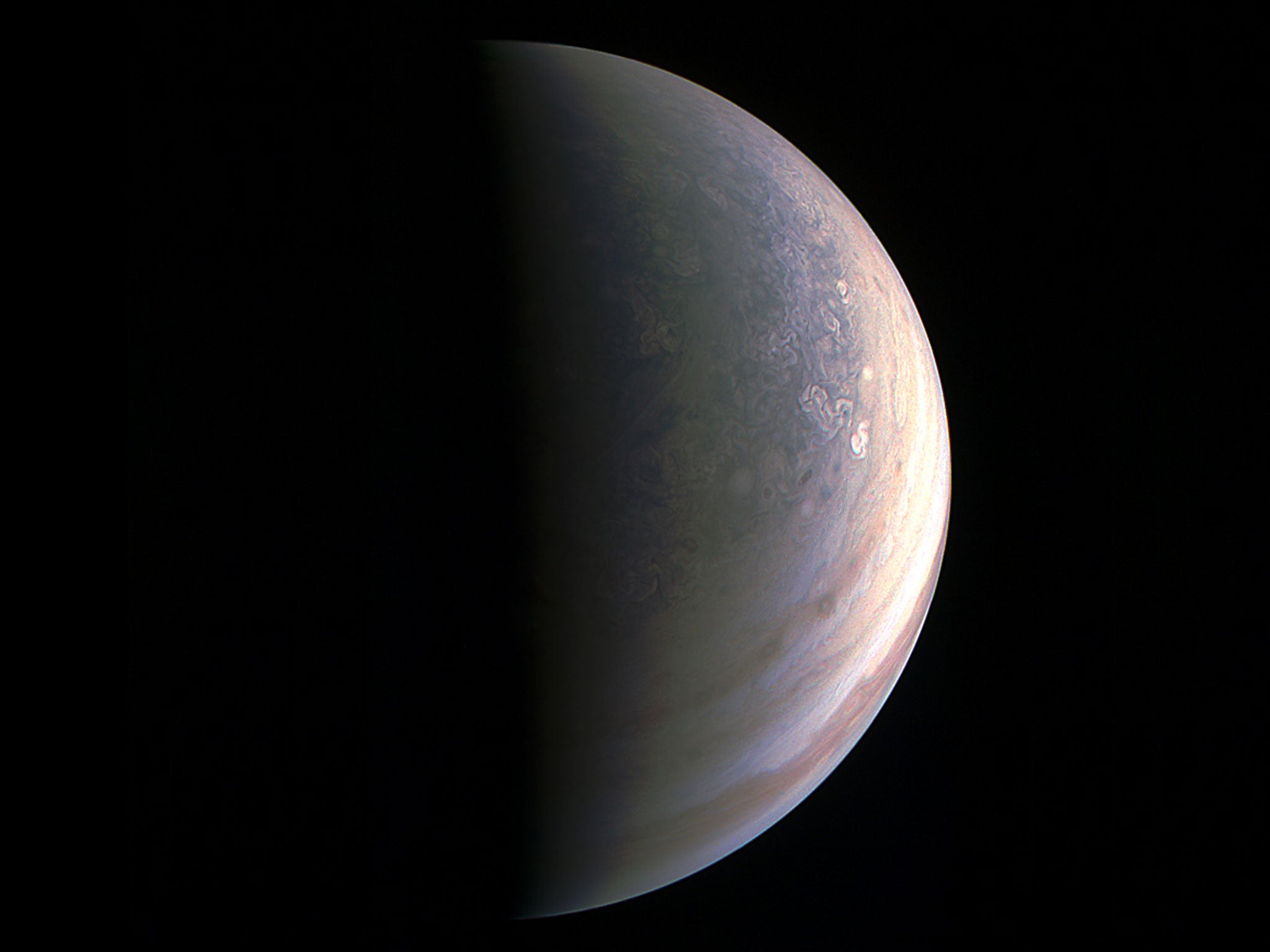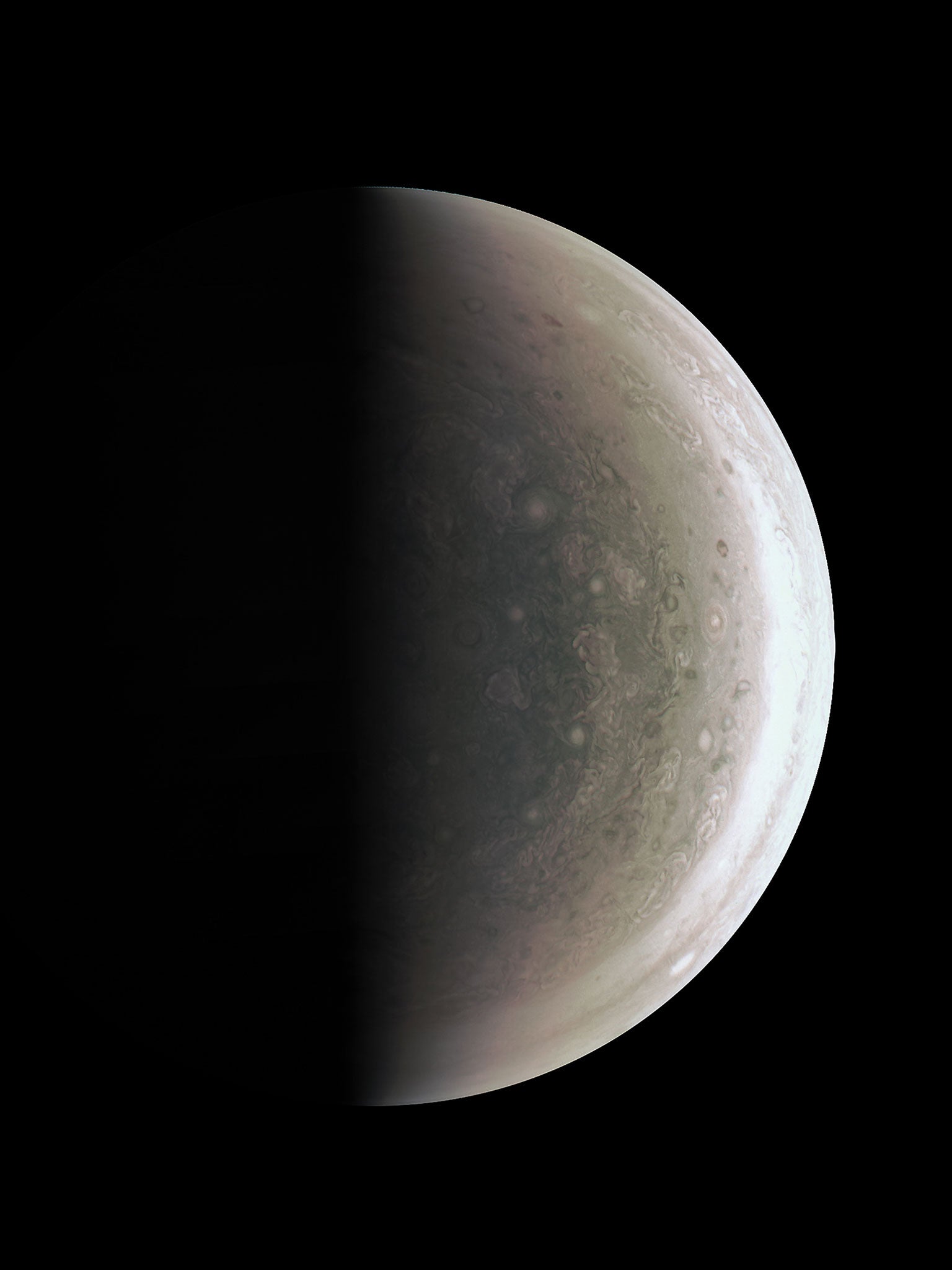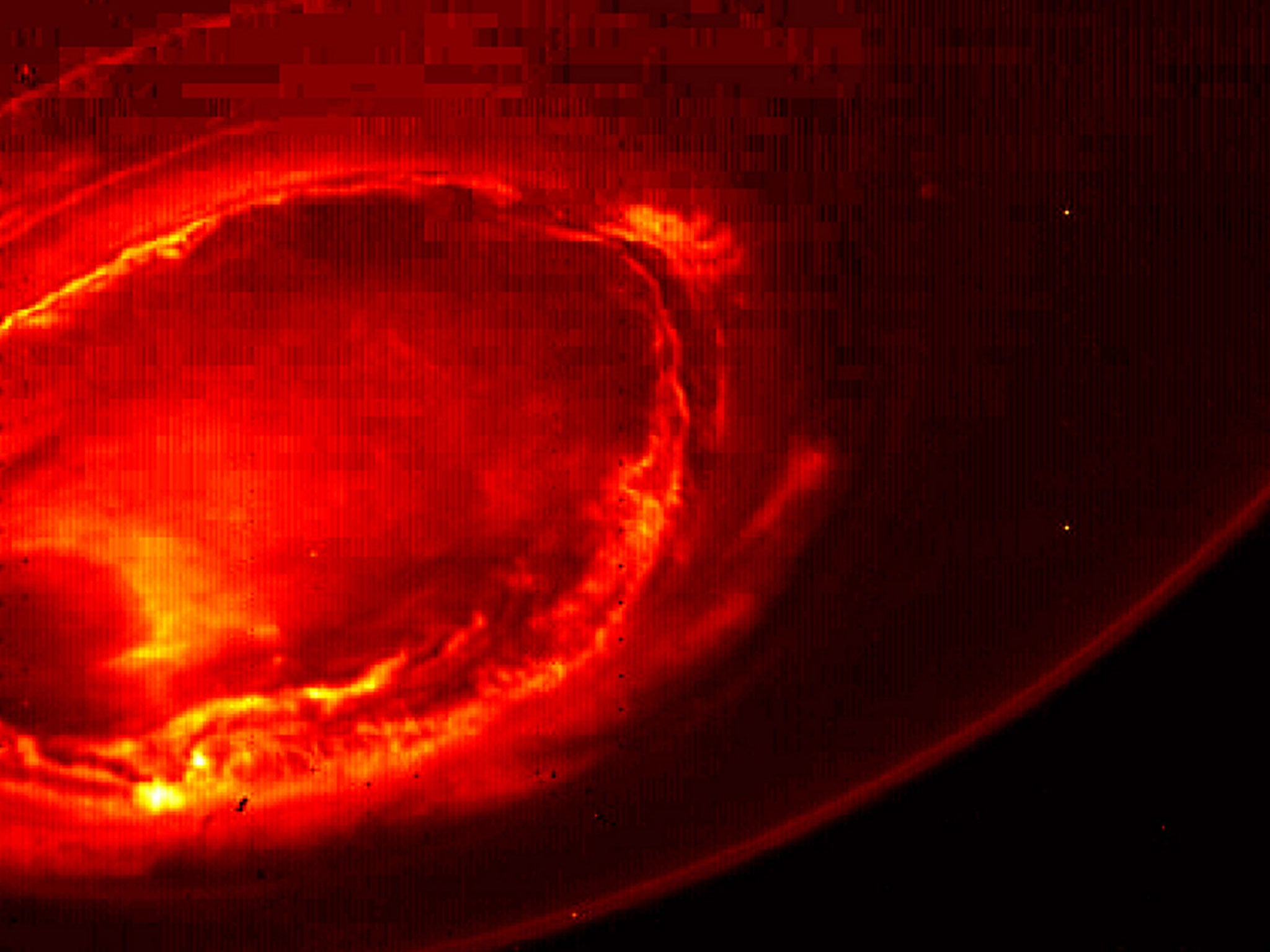New images of Jupiter 'like nothing seen or imagined before'
Scientists examine pictures sent back from the Juno probe - and find the planet is stormier than expected

A Nasa spacecraft has captured the best views of Jupiter yet, revealing turbulent storms in the north pole.
Jupiter's northern polar region is stormier than expected and appears bluer than the rest of the planet, said mission chief scientist Scott Bolton of the Southwest Research Institute in San Antonio.
“First glimpse of Jupiter’s north pole, and it looks like nothing we have seen or imagined before,” Mr Bolton, said. “It’s bluer in color up there than other parts of the planet, and there are a lot of storms... This image is hardly recognisable as Jupiter.”
Nasa has released a batch of close-up pictures taken by the Juno spacecraft last week when it flew within 2,500 miles of Jupiter's dense cloud tops.
During the rendezvous that took Juno from pole to pole, the solar-powered spacecraft turned on its camera and instruments to collect data.
The first glimpse of Jupiter's poles came in 1974 when Pioneer 11 flew by on its way to Saturn. Juno also sent back unique views of Jupiter's bright southern lights considered the most powerful in the solar system.

The flyby was the first of three dozen planned close passes during the 20-month mission. "The largest planet in our solar system is truly unique. We have 36 more flybys to study just how unique it really is,” Mr Bolton said.
Unlike rocky Earth and Mars, Jupiter is a gas giant that likely formed first, shortly after the sun. Studying the largest planet in the solar system may hold clues to understanding how Earth and the rest of the planets formed.
After a five-year journey, Juno slipped into orbit around Jupiter in July to map the massive planet's poles, atmosphere and interior. It's the first spacecraft to carry a titanium vault designed to shield its computer and electronics from intense radiation.
All eight of Juno’s science instruments were collecting data. The Jovian Infrared Auroral Mapper (JIRAM), supplied by the Italian Space Agency, acquired images of Jupiter at its north and south polar regions in infrared wavelengths.

“JIRAM is getting under Jupiter’s skin, giving us our first infrared close-ups of the planet,” said Alberto Adriani, JIRAM co-investigator from Istituto di Astrofisica e Planetologia Spaziali, Rome. “These first infrared views of Jupiter’s north and south poles are revealing warm and hot spots that have never been seen before."
Juno is only the second mission to orbit Jupiter. When it completes its job in 2018, it will deliberately crash into Jupiter's atmosphere and disintegrate. NASA planned the finale so that Juno won't accidentally smack into Jupiter's moons, particularly the icy moon Europa, a target of future exploration.
Associated Press
Join our commenting forum
Join thought-provoking conversations, follow other Independent readers and see their replies
Comments